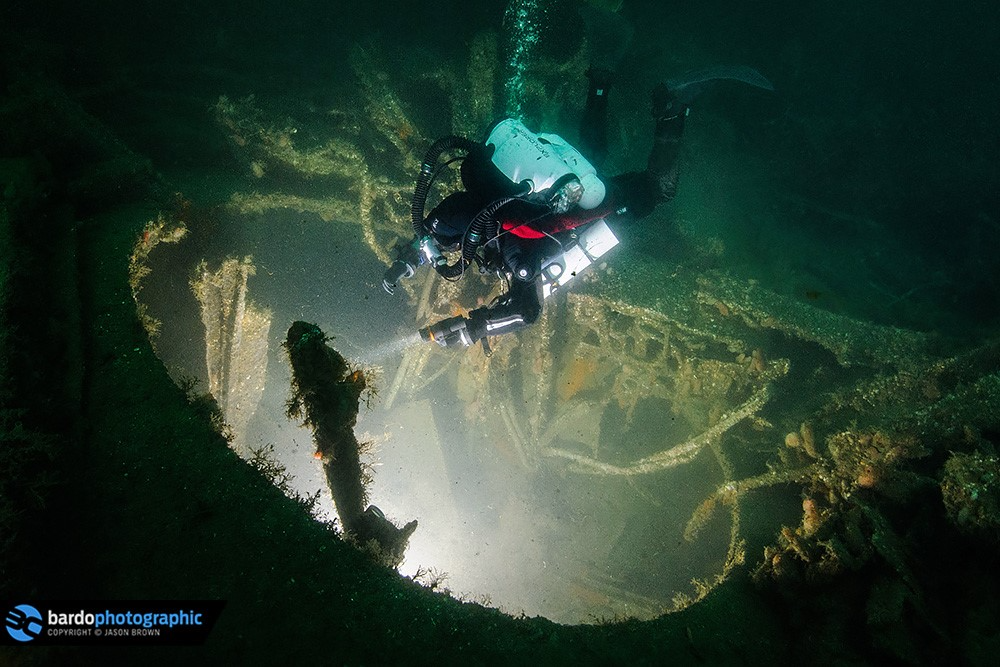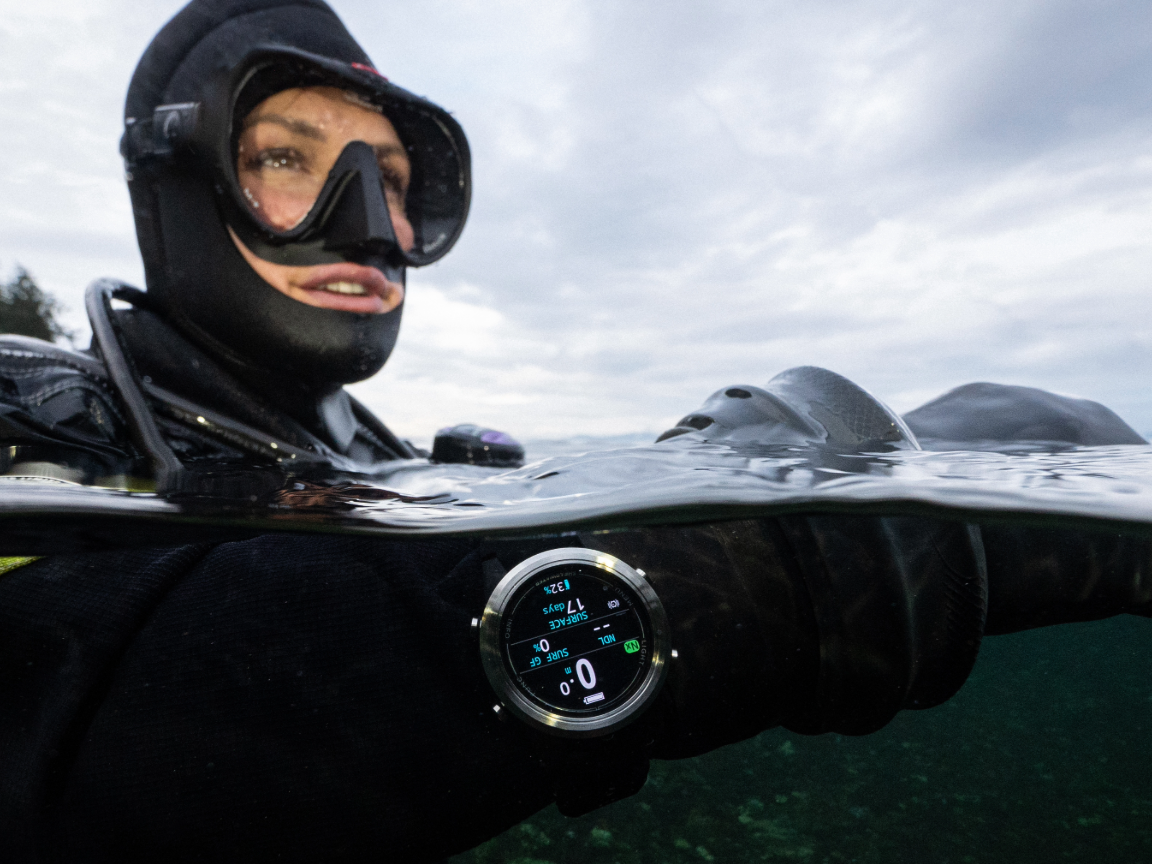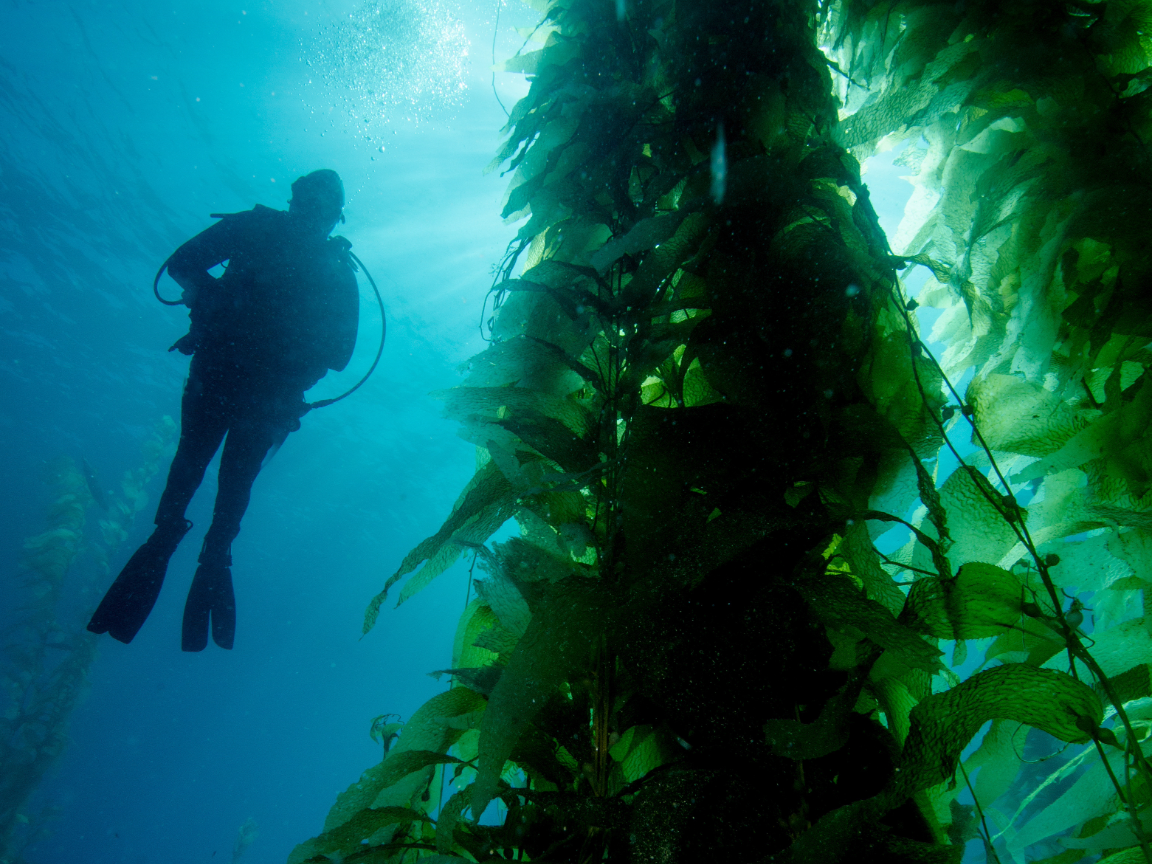When the pandemic pushed our high school online, we were free to dive every week and explore the many sites San Diego has to offer. As aspiring engineers and scientists, my peers and I have always sought to weave our passion for engineering and animal studies into our diving. What better way to use our newfound freedom than to learn more about our aquatic neighbors and answer a question that’d been lurking in my mind: Do fish chase laser pointers as cats do? Admittedly it's a rather odd question, but one that needs to be answered nonetheless.
Just as I would when starting an engineering project, I first scoured the internet for information. Two papers have been published in the National Library of Medicine wherein researchers sought to explore the behavior of fish when presented with a glowing dot from a laser pointer. In Steven H D Haddock’s paper (1), researchers explained how a variety of fish on the Great Barrier Reef had aggressive responses to the laser pointer, and in Emilie Cohn’s research (2), researchers observed fish lunging towards the light. The researchers attributed these strange behaviors to the fish perceiving a territorial threat.

Photo courtesy of Ryan Gedminas.
Both of these papers provided insight as to the investigation that had already been undergone in attempt to answer my very same question. While they confirmed that some fish do indeed attack laser pointers, much like a cat, I wanted to further this research and learn more about how the reef fish here in Southern California behave.
To start, I needed a laser pointer and a team. A couple of dollars on eBay got the first thing settled. As for the second, I reached out to a couple of my peers who were scuba certified. As this was mid-Covid, they too had plenty of time on their hands and were eager to participate. Next, I recreated the waterproof enclosure for the laser used by Steven H D Haddock in their experiments, with some modifications. Using a magnetic reed switch, PVC pipe, union joint, and plexiglass I made a durable underwater enclosure for the laser pointer that could be easily operated with thick gloves. I added a mechanical safety and bolt snap to securely fasten the device to my BCD while fighting through the waves.

Students at a sunset dive searching for a good place to collect data. Photo courtesy of Ryan Gedminas.
When the visibility and weather cleared mid-winter, my dive buddy and I bundled up with all the neoprene we owned and fought through the waves to our favorite local dive spot. The first couple of dives with my laser pointer contraption had varying amounts of success. Poor visibility and high surf resulted in a couple scratched dives, and we chose to find a new primary dive spot after the young great whites moved in for the winter. Once we were underwater, our experiments still faced challenges. If the sun was high and bright, the little dot would go unnoticed, and at night, the particles in the water made the beam prominently visible and the resulting lightsaber scared away fish. But when the ambient light was mild, fish became curious about the green dot.
From the limited interactions I was able to observe, I witnessed White Seabass take one look at the laser and dart away. It seems fitting to their skittish personality. Perch are usually oblivious to the laser, as they are with many other things. And the beloved Garibaldi are just as bipolar watching the laser as they are when seeing divers. Sometimes our little orange friends would swim away, other times they would go ballistic trying to eat and seemingly ram the dot with their head.
The small, baby carrot-sized Señorita fish (Oxyjulis californica) seem the most curious of the laser pointer. They don’t attack and pounce on the laser, like the other researchers described. Rather, the small fish surround themselves in a conical amphitheater-like arrangement and stare down at the dot. It was incredible how the fish naturally spaced themselves like the seats of a football stadium. When I would move the laser they would all follow it with their heads and if it got far enough they would swim over to it and rearrange themselves. Perhaps this is an intimidation strategy for the school of younger fish to scare away small threats. The larger, more mature, hot dog-sized Señorita fish aggressively lunge and nip at the dot very similar to how previous researchers described. Of all of the fish on the reef, it seemed the larger Señorita fish were by far the most interested and consistent with their reaction to the laser.

Señorita fishes watching the laser pointer, circled in red. Photo courtesy of Ryan Gedminas.
The initial interactions I’ve had with these fish have only heightened my interest, and I plan to continue this research by collecting more quantitative data. I wish to use this interesting demonstration of strange behaviors in fish as a gateway to understanding more about the intellectual capability of these animals, which are often regarded as well below that of the average land-dwelling animal. What brings a house cat and a fish together in a way that they both pounce on a little green dot? Why do the young Señorita fish observe the dot with behavior akin to curiosity rather than aggression?
The ocean is one of the few places in our world where the average person can make truly unique discoveries. No matter how small, the excitement of seeing something few others ever will makes the cold, the costs, and the effort well worth it. As divers, we know firsthand how amazing the oceans are, and such are often the first to jump to their defence. I hope that in sharing my findings with others I can grow the interest, admiration, and respect for the ocean that is needed for my generation to preserve it for those to come.
I’d like to express my gratitude towards Shearwater for their support enabling us to collect data safely, and waterprooflaser.com and AGO Environmental for their hardware donations helping us to collect accurate data.
References:
(1) Haddock SH, Dunn CW. Fluorescent proteins function as a prey attractant: experimental evidence from the hydromedusa Olindias formosus and other marine organisms. Biol Open. 2015 Jul 31;4(9):1094-104. doi: 10.1242/bio.012138. PMID: 26231627; PMCID: PMC4582119.
(2) Cohn E, Cole P, Haymaker A, Garner AM, Londraville RL. Response to underwater laser pointer in the Orange-finned Anemonefish Amphiprion chrysopterus and three-spot damselfish Dascyllus trimaculatus. J Fish Biol. 2020 Jan;96(1):274-277. doi: 10.1111/jfb.14192. Epub 2019 Nov 24. PMID: 31760658.
---

Written by Ryan Gedminas
Ryan is a research diver for the University of California and is involved with diving operations at UCI and UCLA. In middle school, he earned his amateur radio license and in freshman year of high school he founded the first electronics and radio club at his school. Ryan is a competitive swimmer, water polo player, and mountain biker. For the past several years he has been diving in San Diego during which he has enjoyed incorporating his passion for electronics with the many facets of diving. Ryan is studying electrical engineering where he is looking forward to continuing diving recreationally and for research purposes. https://www.linkedin.com/in/rgedminas/




